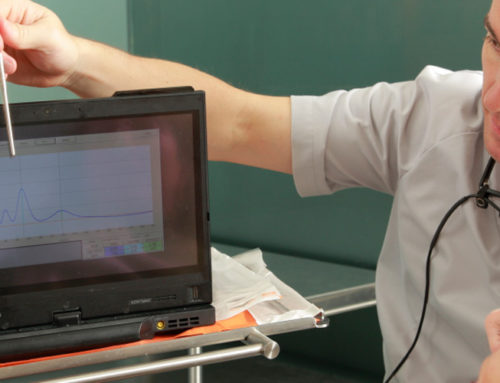Could rhinosinusitis favour the appearance of halitosis? Recent studies confirm that it is more than a simple coincidence.
Also known as “hay fever”, allergic rhinitis is one of the most widespread chronic diseases. Rhinosinusitis is also the sixth most frequent cause of halitosis.
The month of March brings the change of season. Spring looms and with it, the appearance of the feared seasonal allergies. During this time of the year the consultations of patients with very specific allergic pathologies intensify. Among them, allergic rhinitis.
Also known as hay fever, allergic rhinitis is one of the most widespread chronic diseases at present: between 10 and 30% of the population of western countries is affected by this type of inflammation of the nasal mucosa, being most common in people between the ages of twenty and forty.
As the most characteristic symptoms, this disorder causes itching, sneezing, blocked nose, mucus or lack of smell, among others. People who suffer from it have irritated, watery, inflamed eyes, a build-up of mucus and congestion. In recent years, scientific research indicates allergies as a factor that predisposes chronic rhinosinusitis. In 2014, Iranian scientists found that 64% of their patients with rhinosinusitis had a series of manifestations, with halitosis being the fifth most common symptom (41%), only behind the nasal discharge (95%), nasal blockage (94%), smell disorders (63%) and cough (45%). Cialis super active
Now, could rhinosinusitis favour the appearance of halitosis? Recent studies seem to confirm that it can be more than a simple coincidence. This is demonstrated by an investigation carried out by a team of otolaryngologists in Turkey. The study, presented in April 2016, aimed to prove the existence of halitosis in patients with allergic rhinitis. For this, the experts counted on the participation of 83 people -53 of them with allergic rhinitis, whose breath was analyzed through a gas chromatograph with the objective of measuring the levels of volatile sulfur compounds, causing bad breath. Cialis Online
The results of this study revealed that patients with allergic rhinitis emitted volatile sulfur compounds in their breath in a significantly higher amount, confirming that the relationship between rhinitis and halitosis is more than a coincidence. Ventolin Online
“Rhinosinusitis is the sixth most frequent cause of halitosis in Spain”
“Currently, rhinosinusitis is the sixth most frequent cause among the more than 80 that cause halitosis in patients who attend the centers associated with the Breath Institute in Spain,” says Dr. Jonas Nunes, director of the Breath Institute and responsible for the Breath Unit Teknon Medical Center (Barcelona). He adds: “Allergic rhinitis can predispose to halitosis by the action of various bacterial species in cases where there is stagnant mucus, resulting in putrefaction. This produces various types of volatile organic compounds, with the consequent appearance of bad breath. ”
In the same line, Dr. Jordi Coromina, director of the Department of Otorhinolaryngology and co-director of the Breath Unit in Teknon, adds: “There are certain bacteria that use nasal mucus as a protein substrate, releasing bad odour, especially in an anaerobic environment, –not provided with oxygen-, creating an even more favorable scenario for these bacteria.” And he confirms: “Allergic rhinitis frequently causes nasal obstruction, which causes the person suffering from this problem to breathe more through the mouth, drying it out and facilitating the release of compounds in the saliva that become volatile, conferring bad odour.”
Allergic rhinitis: what to do
The approach to allergic rhinitis covers three fundamental categories:
- Measures of environmental control and prevention of allergens: due to their widespread presence in the outside air, pollens can be difficult to avoid. In this case, it is best to reduce, as far as possible, the exposure to pollen during this season. For dust mites, covering the mattress and pillow with waterproof covers helps reduce exposure, in addition to changing and washing the bedding in hot water every two weeks. Nasal washes with saline or physiological saline can also be very beneficial.
- Pharmacological management: taking oral medications or topical application – antihistamines, corticosteroids and others – must always be supervised by a health professional, who will prescribe them according to the type, severity of symptoms, age and the existence of other health conditions, among others.
- Immunotherapy: in this case, immunotherapy is a long-term process, since the improvement is not evident until after about 6-12 months. However, immunotherapy is not free of risks, as it can sometimes cause allergic reactions. Therefore, when considering this option, it is necessary to consider the risks and benefits of immunotherapy against other treatment options.





